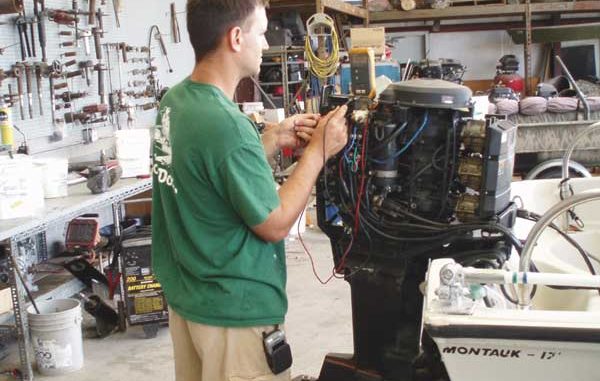
The fish are swarming offshore, but with cinched-up limits, most of them are there just to tease anglers.
From time to time I get questions from boat owners regarding problems with their engine’s ignition system. One such recent question was about an engine that had no fire at the spark plugs.
The owner cleaned the plugs and was able to start the boat, but all he all his engine would do was idle. Later the engine would not start again, so he changed all the plugs, but that didn’t help. His fishing buddy suggested that the problem may be a defective kill switch. He wanted to know how to go about disconnecting that switch.
Ignition systems include several expensive components. To just guess and either disconnect or replace parts of that system is not the correct way to repair your problem.
If you have or even suspect you have a problem with your ignition system, invest a few dollars in a good service manual for your particular engine brand and model. The service manual will guide you through a series of tests so that you can determine the cause of your problem and then make the appropriate repairs.
If you simply guess or, even worse, listen to the wisdom of your fishing buddies who might not know the difference between a fishing lure and a spark plug, you could be purchasing ignition parts that you do not need.
Ignition parts are not returnable. If you purchase a particular ignition part, take it home, install it on your engine and find out that the problem has not been cured, you will not be able to return it for credit. You are stuck with a part you didn’t need.
Once you have purchased your service manual, take a little time to read through the ignition system section before proceeding with your testing. Always follow the manual step by step. Many times it may be tempting to jump around, but in doing so you may overlook something that could come back to haunt you later.
Recently I was working on a customer’s boat that had no fire from the ignition. The day he brought the boat to me, the ignition system mysteriously began to work again. I backed the boat up to the test tank, dropped the engine in and cranked it up on the first try. I ran a diagnostic check of the ignition system, and could not find anything wrong.
I decided to run the engine for a little longer to make sure that something did not break down once the engine reached normal operating temperature. After approximately 30 minutes, the engine killed and would not restart. Upon checking, I found that there was no spark at the plugs.
I got out my service manual, and began the test procedures. The first component to be tested was the trigger, and it was within specifications. The next component to be tested was the stator. The test reading for the stator was in the good range on the meter, but just barely in that range.
Knowing that stators do fail quite often, I was very tempted to stop there and order a $300 stator for this engine. I don’t know if a little birdie was whispering in my ear or if it was just intuition, but I decided to do the rest of the test procedures before replacing any parts.
The last item I checked was the power pack. To my surprise, I found that voltage from the stator was going into the power pack, but nothing was coming out at the ignition coils. An additional check of the ignition coils verified that they were good, so the power pack was replaced. The engine is now running, and hopefully the customer is catching fish.
Many times I have received phone calls from boat owners seeking used ignition parts for their outboard engines. I realize that ignition parts tend to be a little costly, but used ignition parts can sometimes cost a lot more than the new ones.
Used parts are salvaged from engines that are no longer repairable. You have no way of knowing what engine this part was taken off of. You do not know how much misuse and abuse this engine or part has been subject to, and you have no idea as to how many hours of service are on this part.
If you install a used power pack on your engine and there is something wrong in that power pack, it is possible that your engine could fire one or more of the cylinders out of time. This could cause a major power-head failure called piston detonation. The power-head overhaul may actually cost more than the engine is worth.
Used parts have no warranty. If you buy it and it goes bad the next day, you are out of luck. New parts always come with a manufacturer’s warranty. The warranty will not only replace a defective part, but will also cover additional repairs that may be required due to damage caused by the defective part.
Ignition system testing may require some specialized instruments. Your service manual will tell you what instruments you need to test your system.
If you do not have these meters, it would be best to bring your engine to a qualified mechanic.
Have a great summer, enjoy the water and if you have any questions about your boat, motor, or trailer, you can contact me via e-mail at theboatdr@yahoo.com.


